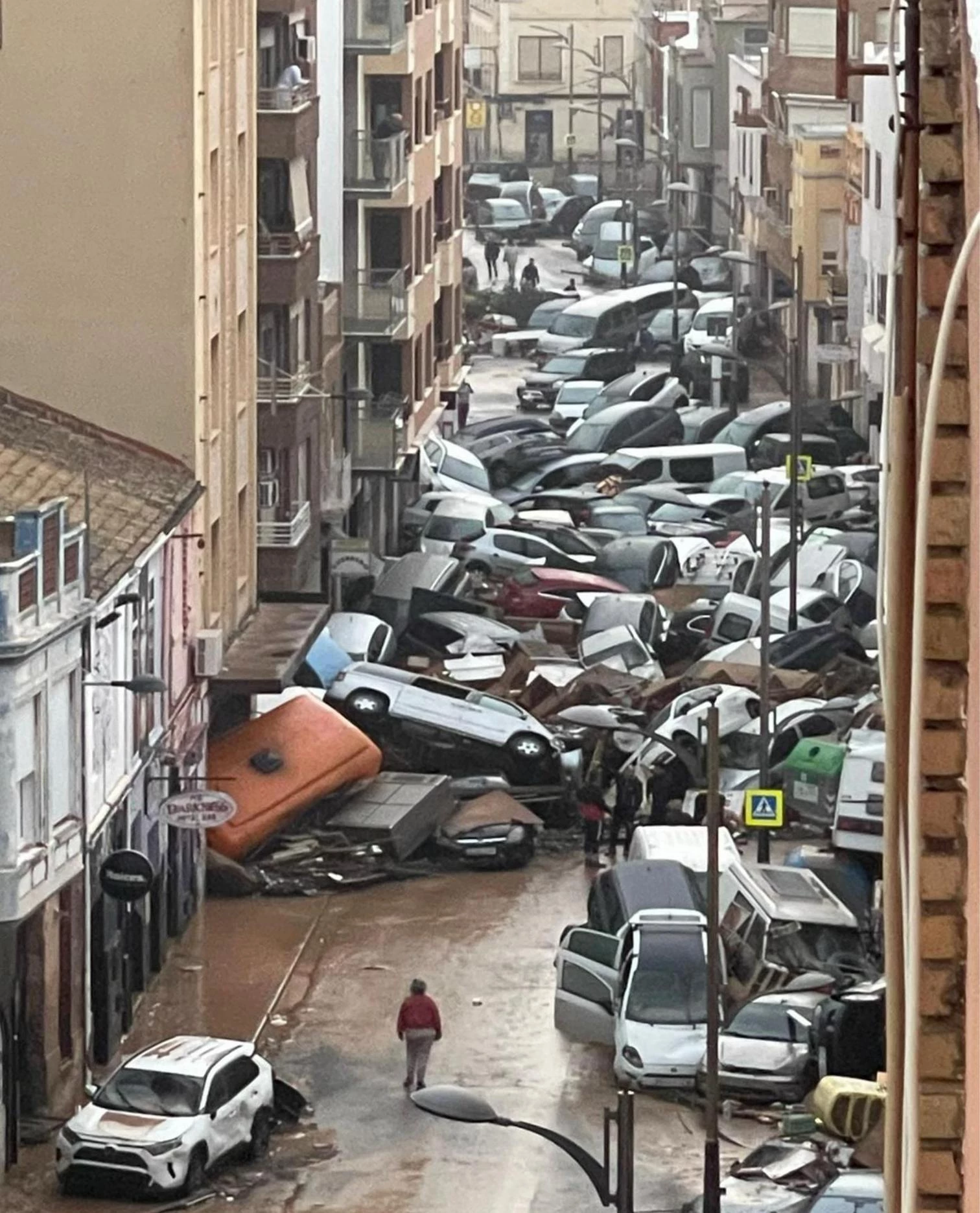
Street in the municipality of Sedaví (Valencia) after the flood of October 29 © EFE
The DANA of Valencia has violently struck the territory and the consciences. On one hand, it reminds us of our failure in the moderation of climate change, which is making meteorological catastrophes more frequent and intense; on the other, it faces us with the challenge of preventing these phenomena through infrastructures and urban planning. A week before this tragic cold front, the United Nations released its latest report on greenhouse gas effects, noting that emissions continue to grow and that we have lost a decade since the Paris Agreement of 2015, making unfeasible the objective of limiting the increase in temperature to 1.5ºC and feeding skepticism on the next climate summit in Baku. Faced with this impotence, there is no option but to adapt to a more hostile and extreme environment through land planning and the construction of infrastructures that limit damages, avoiding the urban indiscipline that has allowed the occupation of ravines and floodable areas, but at the same time accepting that the nature we inhabit today is nothing but a colossal artificial creation.
We are accustomed to understanding our planet as a superposition of different spheres: the lithosphere, the hydrosphere, the cryosphere, the atmosphere, and the biosphere; the rocks, water, ice, air, and living beings that interact since millions of years ago. To these spheres we must add the one formed of late by anthropic action, which the American geologist Peter Haff from Duke University denominated ‘technosphere,’ and whose weight was estimated at some thirty trillion tons by another geologist, the Polish-British Jan Zalasiewicz from Leicester University. In good measure, the technosphere is formed by built territory and large transport infrastructures, but also by the power generation and food production facilities, aside from all kinds of machines. As the scientists who have coined the term argue, the technosphere is in its current dimension a parasite of the biosphere that disrupts Earth’s habitability, through the extinction of species, climate change, and the chemical alternation of oceans.
Despite this, the technosphere is also essential for our survival, and humankind could hardly feed itself without the artificial fertilizers that come from the synthesis of ammonia, or live in dense and compact cities without using the materials and energy that have their origin in the Industrial Revolution. Perhaps there is not much we can do to prevent the Mediterranean of Sorolla from warming up increasing the energy that in the end causes meteorological disasters, but one wonders what the consequences of the recent DANA would have been if the Turia riverbed had not been diverted away from the city of Valencia, or if the reservoirs that regulate the flow of so many rivers had not been built. Many of these large works disrupt nature, and they are often polemic, but without rejecting the usefulness of impact studies it is essential to underline the need to intervene on the territory to protect ourselves from the chance of catastrophes. The chaos in the technosphere is not an exclusive product of its artificial nature, but above all of the scarce human intelligence used in its preemptive making.

Damage caused by the dana in Llombay (Valencia) © Europa Press







